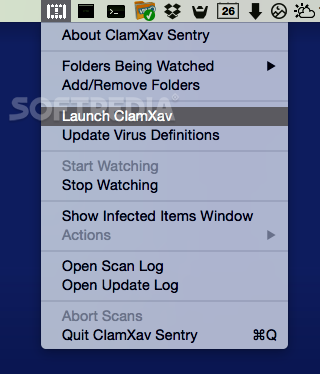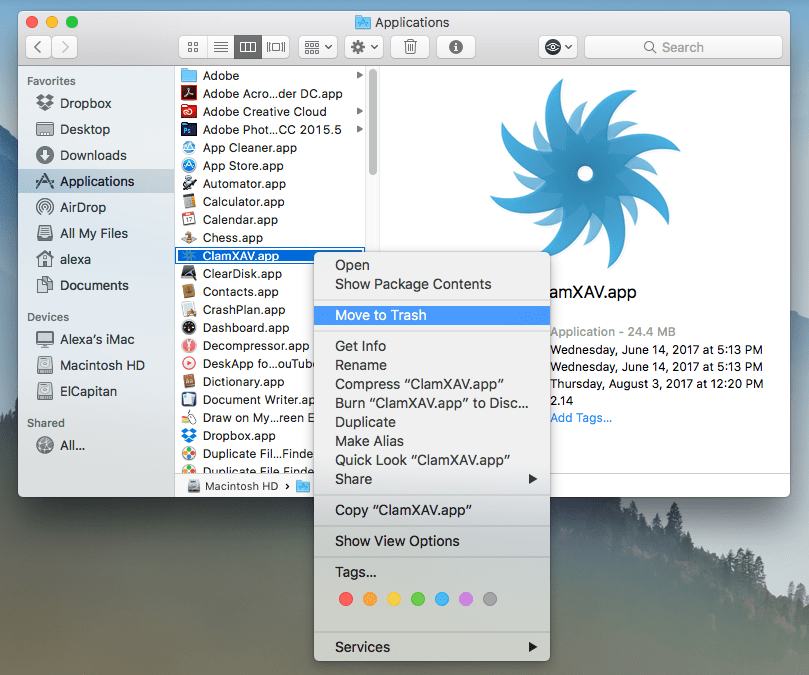

USING CLAMXAV UPDATE
Restart ClamXav and you should now be able update your definitions without further issues.The Sourcefire VRT became Cisco Talos, and ClamAV development remains there.ĬlamAV includes a command-line scanner, automatic database updater, and a scalable multi-threaded daemon running on an anti-virus engine from a shared library.

In nano press ctrl+x and then hit y when asked if you want to save, and enter to confirm the file name to save to (it will default to the correct file name). Now you just need to save the file and exit the editor. You should be left with something that looks like this: # Proxy settings If your proxy server requires authentication you’ll also have to un-comment the two lines directly below these lines and enter your authentication details there. You need to edit this section of the file to remove the # from the front of the HTTPProxyServer and HTTPProxyPort lines, and then you need to replace the place-holder values ( and 1234) with the correct values for your proxy server.

You need to scroll down through the file (using the cursor keys in nano) until you find the commented out proxy directives which will look something like this: # Proxy settings Lines starting with a # are said to be “commented out”. Within this file, all lines starting with a # are considered comments, and ignored by freshclam when it loads it’s configuration. This will open the freshclam configuration file in the nano text editor (if you’re comfortable on the Terminal you’ll probably prefer to use VI of course). Start by opening a Terminal window ( Applications→Utilities→Terminal), and then entering the command: sudo nano /usr/local/clamXav/etc/nf These instructions will only work if you’re logged into an admin account, so if you normally run in a non-admin account, please log into your admin account before continuing. If you’re not afraid of the Terminal, you can easily edit this configuration file manually to get ClamXav to use a proxy server for updates. Although the ClamXav GUI doesn’t give you control over the variables in the freshclam configuration file, that file does exist as part of ClamXav ( /usr/local/clamXav/etc/nf), and if you edit it manually it will respect the settings specified in that file.

USING CLAMXAV FREE
This implies that ClamXav doesn’t support proxies, but it actually does, they just didn’t bother to expose that functionality through the GUI.ĬlamXav is just a GUI wrapper for the free and open source Clam AntiVirus toolkit, and it uses Clam’s regular auto-updating tool freshclam. It ignores OS X’s system-wide proxy settings, and it has no interface elements of its own to allow you to specify a proxy server manually. Unfortunately I didn’t get very far with my initial testing this afternoon because I’m in an environment where I have to use an HTTP proxy server to access the net, and ClamXav appears not to support proxies at first glance. I’d tried it a few years ago and wasn’t very happy, but I’d been told by friends that it has improved a lot since, and a first glance at the GUI suggests they’re right.
USING CLAMXAV MAC
I’ve been looking at different free Mac AV solutions so that I can make recommendations to less-computer-savy family members, and this afernoon I decided to give ClamXav a go.


 0 kommentar(er)
0 kommentar(er)
